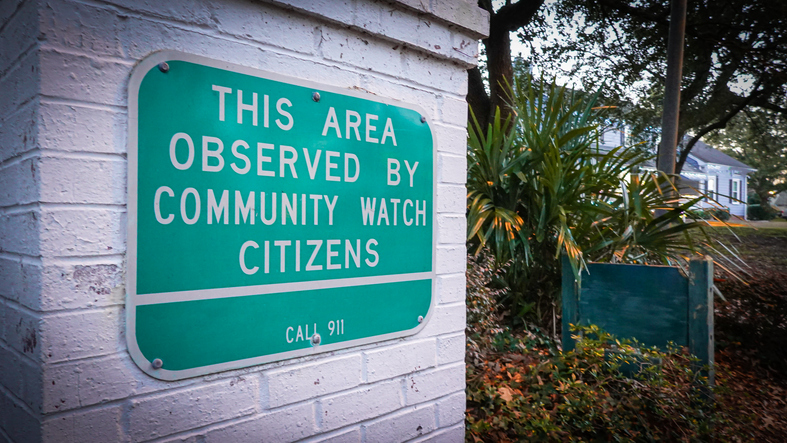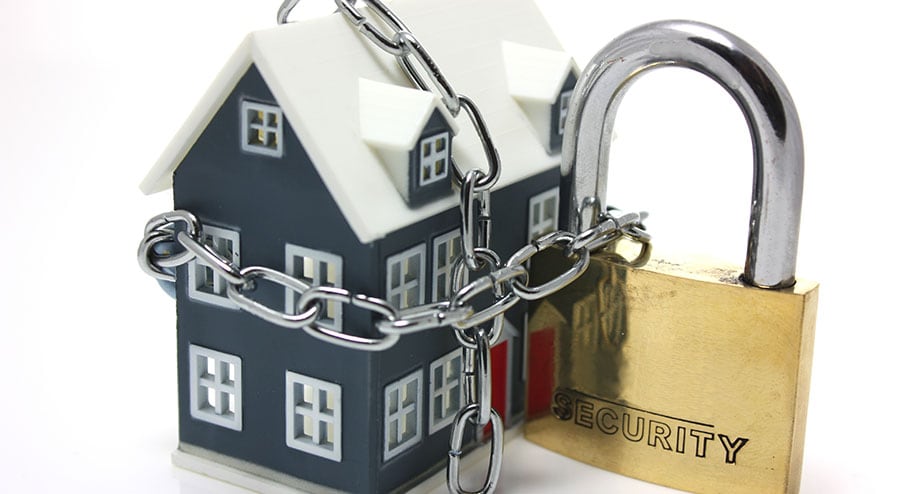Neighborhood watch programs have become crucial for communities seeking to enhance safety and security. By fostering collaboration among residents, these programs empower individuals to actively participate in crime prevention and create a united front against criminal activities. Through effective training, technology utilization, and collaboration with law enforcement, schools, businesses, and community organizations, neighborhood watch programs contribute to safer neighborhoods and improved quality of life.

Table of Contents
- Establishing A Neighborhood Watch Program
- Active Participation And Training
- Preventing Crime And Addressing Safety Concerns
- Collaboration With Law Enforcement And Community Organizations
- Collaborating With Schools, Businesses, And Other Community Organizations
- Communication And Measurement Of Success
- Conclusion
Establishing A Neighborhood Watch Program
Collaborating with neighbors in a neighborhood watch program brings forth numerous advantages that significantly enhance security and create a safer community. One of the primary benefits is crime prevention. By working together, neighbors actively deter criminal activities in their area. The increased surveillance and presence of watchful residents act as a powerful deterrent, making potential criminals think twice before engaging in illegal activities.
Another key benefit is the ability to respond swiftly to suspicious activities or emergencies. With a neighborhood watch program in place, residents are equipped to promptly respond and take appropriate action. This quick response helps prevent crimes from escalating and ensures that timely assistance is provided to those in need.
Collaboration with neighbors also leads to increased awareness. A strong network of vigilant individuals who actively observe their surroundings and report suspicious behavior can make a significant difference in crime detection and prevention. This heightened awareness contributes to early intervention and ensures a safer environment for all residents.
Furthermore, participating in a neighborhood watch program fosters a sense of security. Knowing that neighbors are actively looking out for each other and taking proactive measures to enhance security creates a strong bond within the community. This sense of security positively impacts the overall well-being and quality of life within the neighborhood, making it a more desirable place to live.
Neighborhood watch programs have been proven to reduce crime rates and increase community safety by fostering collaboration and vigilance among residents.
Steps To Set Up A Neighborhood Watch Program
Setting up a neighborhood watch program involves several key steps to ensure its successful establishment and operation. The following steps serve as a general guideline for initiating a neighborhood watch program.
- Identifying interested residents – Reach out to neighbors to gauge their interest and willingness to participate in a neighborhood watch program. Hosting a community meeting or distributing flyers can help gather initial support.
- Establishing a core team – Form a core team of dedicated residents who will take on leadership roles within the neighborhood watch program. This team will be responsible for organizing meetings, coordinating activities, and communicating with other residents.
- Defining roles and responsibilities – Clearly define the roles and responsibilities of each member within the neighborhood watch program. Assign specific tasks such as organizing patrols, maintaining communication channels, and liaising with local law enforcement.
- Conducting initial meetings and discussions – Hold initial meetings to discuss the objectives, rules, and expectations of the neighborhood watch program. Use this opportunity to address any concerns or questions from residents and establish a sense of unity and purpose.
- Engaging with law enforcement agencies – Establish a positive working relationship with local law enforcement agencies. Invite representatives to neighborhood watch meetings, seek their guidance on crime prevention strategies, and establish channels for reporting and sharing information.
Legal Considerations And Requirements
Before fully implementing a neighborhood watch program, it is essential to be aware of the legal considerations and requirements involved. Familiarize yourself with local laws and regulations pertaining to neighborhood watch programs. Different jurisdictions may have specific rules regarding the activities and responsibilities of residents participating in such programs.
Consult with legal experts or insurance providers to understand any liability issues that may arise from operating a neighborhood watch program. Determine whether additional insurance coverage is necessary to protect participants and the community.
Establish protocols for documenting incidents, interactions with law enforcement, and other relevant information. Maintain accurate records of activities and communication to ensure transparency and accountability within the neighborhood watch program.
Active Participation And Training
Encouraging residents to actively participate in a neighborhood watch program is crucial for its effectiveness and success. Create awareness among residents about the importance and benefits of a neighborhood watch program. Emphasize how their active participation can contribute to a safer community and enhance their own well-being.
Plan regular community events, such as block parties, safety workshops, or neighborhood clean-ups, to foster a sense of camaraderie and engagement. These events provide opportunities for residents to connect, build relationships, and strengthen their commitment to the neighborhood watch program.
Ensure that all residents feel welcome and included in the neighborhood watch program. Encourage diversity and respect for different perspectives. Make efforts to reach out to residents of all ages, backgrounds, and abilities, and provide avenues for their participation and contribution.
Types Of Training And Education For Members
Providing adequate training and education to members of a neighborhood watch program is essential to equip them with the necessary skills and knowledge.
Educate members about common crime patterns, such as burglary or vandalism, and teach them effective preventive measures. This may include securing doors and windows, installing proper lighting, and practicing good home security habits.
Train members on how to observe and identify suspicious activities or individuals accurately. Teach them how to gather relevant information, document incidents, and report to the appropriate authorities in a timely manner.
Enhance members’ communication skills and teach them conflict-resolution techniques to handle challenging situations effectively. This training ensures that interactions with community members, law enforcement, and potential perpetrators are conducted respectfully and peacefully.
Utilizing Technology For Neighborhood Watch Programs
In the digital age, utilizing technology can significantly enhance the effectiveness of a neighborhood watch program. Encourage residents to install surveillance cameras on their properties. This can act as a deterrent and provide valuable evidence in case of any criminal activities. Establish guidelines for responsible and ethical use of surveillance systems to maintain privacy and ensure compliance with local regulations.
Utilize technology to establish efficient communication channels within the neighborhood watch program. This may include creating online groups, utilizing messaging apps, or setting up email lists to share important information, updates, and safety alerts in real-time.
Create social media platforms or dedicated websites for the neighborhood watch program. Utilize these platforms to share safety tips, crime prevention strategies, and community updates. Social media can also serve as a platform for residents to report suspicious activities or seek assistance.
Preventing Crime And Addressing Safety Concerns
Implementing effective strategies for preventing crime is a fundamental aspect of a neighborhood watch program. Encourage residents to maintain a visible presence within the community, such as by walking or biking in the neighborhood, especially during peak times. Increased visibility serves as a deterrent to potential criminals. Additionally, implementing neighborhood watch patrols can further enhance surveillance and deter criminal activities.
Well-lit areas are less attractive to criminals as they prefer areas with shadows and low visibility. Encourage residents to install adequate outdoor lighting, particularly in areas prone to dark spots. Additionally, maintaining well-manicured and trimmed landscaping helps eliminate hiding places for criminals.
Educate residents about the importance of adopting secure habits. This includes locking doors and windows when leaving homes, securing valuables in vehicles, and using proper locking mechanisms for gates and fences. Promoting these practices reduces the likelihood of opportunistic crimes.
Specific Safety Concerns
Neighborhood watch programs should address specific safety concerns that are prevalent in the community. Residents should promptly report incidents of vandalism, burglary, or other safety concerns. Create a system for reporting such incidents, which could include designated hotlines, online reporting forms, or direct contact with local law enforcement.
Collaborate with local law enforcement agencies to identify areas of concern and develop targeted prevention plans. This could involve increased patrols, increased community policing initiatives, or implementing specific measures to address recurring issues.
Empower residents to take proactive steps in addressing safety concerns. For instance, organizing community clean-up events can help deter vandalism, while providing resources and guidance on home security measures can assist in preventing burglaries. Encourage residents to be vigilant, report suspicious activities, and look out for one another.
Modern Crime Challenges
Neighborhood watch programs must adapt to modern crime challenges, including the growing threat of cybercrime. Conduct training sessions to educate members about common cyber threats, such as phishing, identity theft, and online scams. Provide guidance on maintaining strong passwords, recognizing suspicious emails, and securing personal information online.
Seek collaboration with local cybersecurity experts or organizations to provide specialized training and resources. These experts can offer insights into the latest cyber threats and preventive measures, helping members stay informed and better protect themselves and their community.
Develop channels within the neighborhood watch program for reporting cybercrime incidents. This could involve partnerships with local law enforcement or relevant cybercrime reporting platforms. Ensuring residents have a reliable and accessible means of reporting cybercrime helps create a safer digital environment for the community.
Collaboration With Law Enforcement And Community Organizations
Law enforcement agencies play a vital role in supporting and collaborating with neighborhood watch programs. Their involvement strengthens the effectiveness and credibility of the program. Law enforcement agencies provide valuable training sessions and workshops to members of the neighborhood watch program. This training equips participants with the knowledge and skills necessary to identify suspicious activities, report incidents accurately, and enhance overall crime prevention efforts.
Law enforcement agencies establish open lines of communication with neighborhood watch programs. They share relevant crime trends, safety tips, and alerts, enabling residents to stay informed and take appropriate preventive measures. This collaboration ensures a coordinated approach to community safety.
Law enforcement officers may collaborate with neighborhood watch volunteers to conduct joint patrols in the community. This visible presence serves as a deterrent to potential criminals and helps foster a sense of security among residents. Joint patrols also allow for direct interaction between law enforcement officers and community members, building trust and rapport.
Collaborating With Schools, Businesses, And Other Community Organizations
Collaboration with schools, businesses, and other community organizations expands the reach and impact of neighborhood watch programs. Working together, they can address safety concerns, promote crime prevention, and create a stronger sense of community.
Neighborhood watch programs can collaborate with schools to implement educational programs and workshops focused on safety, crime prevention, and personal security. This partnership helps instill safety awareness in children and youth, empowering them to become active participants in community safety.
Collaborating with businesses and community organizations enables neighborhood watch programs to access additional resources and support. Businesses may contribute financial resources, sponsor events, or provide facilities for meetings and training sessions. Community organizations can offer expertise, volunteers, or outreach platforms to promote safety initiatives.
Schools, businesses, and community organizations often have unique perspectives and insights into community safety concerns. Collaborating with them allows neighborhood watch programs to address specific issues effectively. For example, schools may provide guidance on child safety, businesses may contribute expertise on retail crime prevention, and community organizations may offer support for vulnerable populations.
Communication And Measurement Of Success
Effective communication is essential for a neighborhood watch program to ensure residents are well-informed about safety concerns and can actively participate in crime prevention efforts. Distribute newsletters or send regular email updates to residents, providing information about recent incidents, safety tips, upcoming events, and success stories. These updates keep residents engaged and aware of ongoing efforts.
Create a dedicated website or social media pages for the neighborhood watch program. Utilize these platforms to share timely information, safety resources, and community alerts. Encourage residents to follow and actively engage with the online presence.
Organize regular community meetings and events where residents can gather, discuss safety concerns, share ideas, and receive updates from law enforcement representatives and neighborhood watch leaders. These face-to-face interactions foster a sense of community and allow for direct communication.
Install signs or banners indicating the presence of a neighborhood watch program throughout the community. These visible signs serve as a reminder to residents and potential criminals that the community is actively involved in promoting safety.
Measuring The Success And Impact Of Neighborhood Watch Programs
Measuring the success and impact of a neighborhood watch program helps assess its effectiveness, identify areas for improvement, and showcase its value to the community. Monitor crime statistics before and after implementing the neighborhood watch program to identify trends and changes in crime rates. Keep a record of incident reports and their resolution to assess the program’s impact on reducing criminal activities.
Conduct surveys or interviews to collect feedback from residents about their perceptions of safety, satisfaction with the program, and any suggestions for improvement. Engage with law enforcement to obtain their perspectives on the program’s effectiveness and collaboration.
Measure the level of community engagement and participation in the neighborhood watch program. Assess attendance at meetings, volunteer numbers, and participation in patrols or other activities. Increased involvement indicates a positive response and greater effectiveness of the program.
Observe changes in the community environment, such as improved cleanliness, reduced graffiti or vandalism, or a greater sense of security among residents. These visible improvements indicate the positive impact of the neighborhood watch program.
Conclusion
Neighborhood watch programs serve as a powerful tool for enhancing security and creating safer communities. Through collaboration with neighbors, active participation, comprehensive training, and the use of technology, these programs address specific safety concerns, adapt to modern crime challenges, and foster a sense of unity. Collaborating with law enforcement, schools, businesses, and community organizations strengthens the program’s impact while supporting vulnerable populations ensures inclusivity, and addresses their unique needs. Effective communication, measuring success, and drawing inspiration from successful examples worldwide are crucial aspects. By embracing neighborhood watch programs, we empower residents, foster a strong sense of community, and work collectively toward building safer neighborhoods and improving the overall quality of life for everyone involved.




